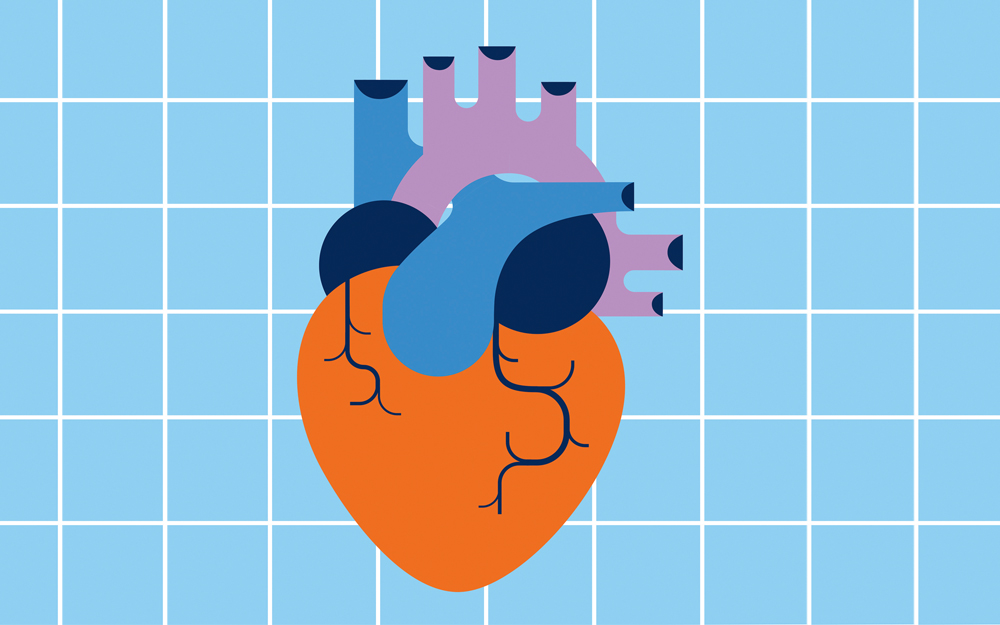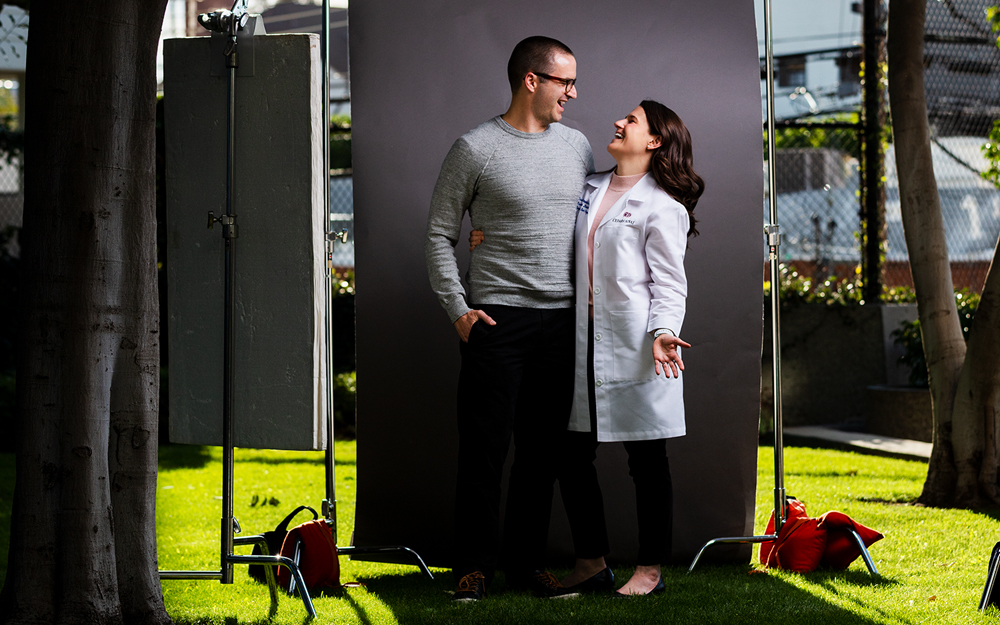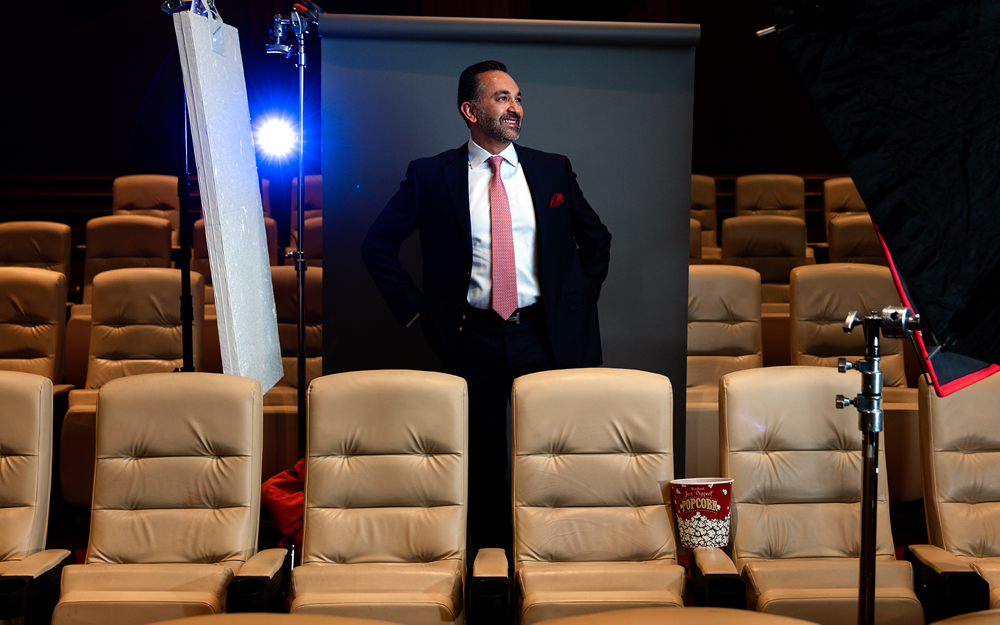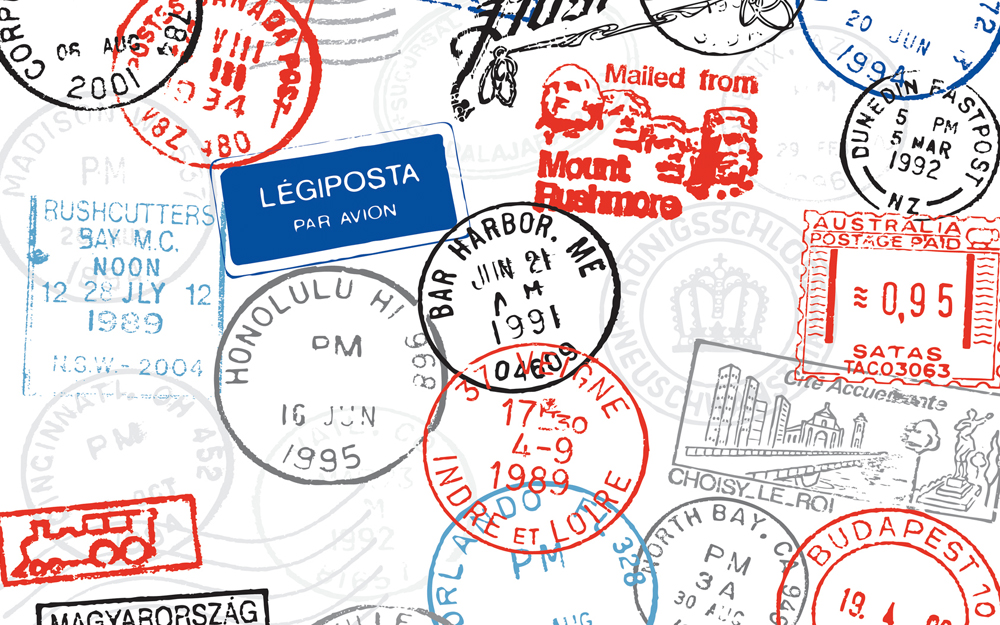Pioneering Heart Valve Care Expands and Improves Lives
Date
June 7, 2022
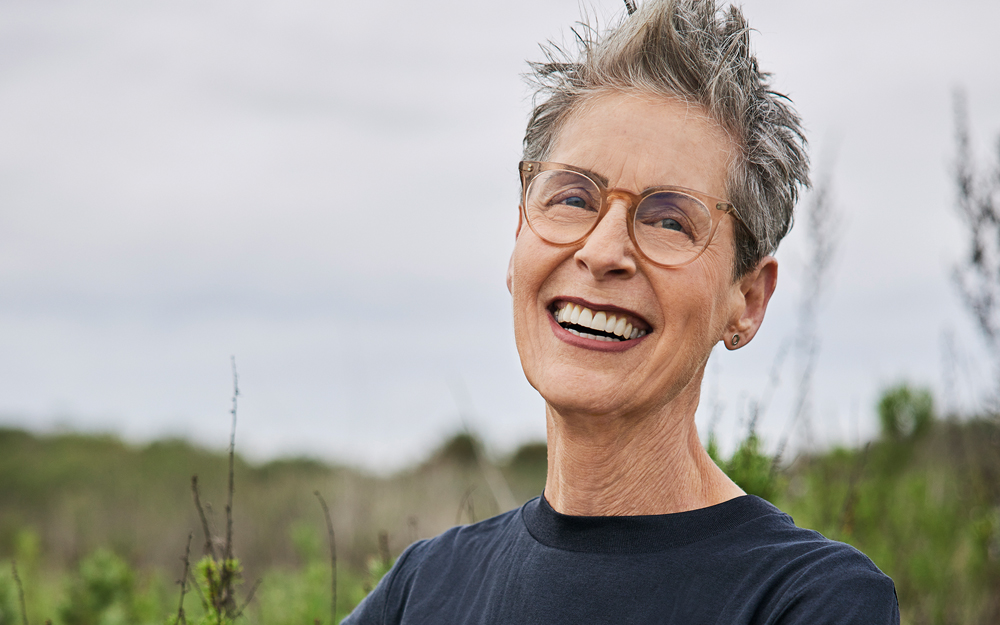
Date
June 7, 2022
Medical providers featured in this article
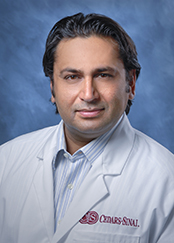
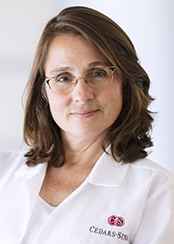
In Brief
{{cta-block}}
Dramatic advances in the field of minimally invasive heart valve replacement are extending and improving life for millions of previously untreatable patients. Cedars-Sinai physicians are seeking the next frontier.
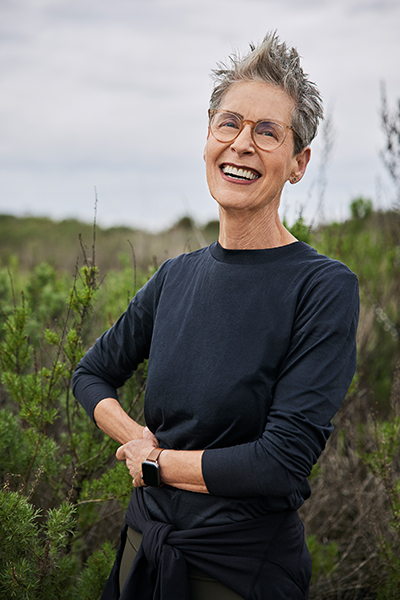
Jane Booth was aghast when her cardiologist told her she needed heart surgery. Booth, a yoga and tennis enthusiast who walks 5 miles a day, had nevertheless developed severe aortic valve stenosis, the result of a congenital heart defect identified by chance years ago. Over time, the faulty structure of her heart’s major valve caused it to narrow, putting her at risk for heart failure. But the otherwise healthy 65-year-old felt fine and couldn’t fathom undergoing open-heart surgery for a condition that seemed to have no impact on her active life.
Late at night, Booth would lay awake fearing her own heartbeat. On brisk walks, she’d get short of breath and wonder, "Is this it? Is this what the doctors were talking about?"
Staggering advances over the last 10 years have revolutionized the treatment of heart valve disease, a diagnosis shared by about 5 million new patients annually. A decade ago, doctors treated valves with medication or open-heart surgery—or not at all. Today, innovative minimally invasive repair or replacement techniques performed by interventional cardiologists save, extend and improve the lives of countless patients previously considered too old or frail for surgery. And the paradigm-shifting procedures continue to evolve: The Smidt Heart Institute at Cedars-Sinai is a world leader in transcatheter aortic valve replacement (TAVR) for the oldest and sickest patients and also for healthier patients like Booth. The widespread adoption of this minimally invasive technique and its game-changing growth to a wider population is largely thanks to the tireless, methodical research of Booth’s physician Dr. Rajendra Makkar—and a pioneering, collaborative, care-team approach.
Cedars-Sinai physicians have performed more TAVR procedures than any other U.S. center, and continue to make leading-edge advances on catheter-based fixes for all four heart valves.
"With these procedures, we make a real impact," says Dr. Makkar, associate director of the Smidt Heart Institute and the Stephen R. Corday, MD, Chair in Interventional Cardiology. "Our mission is not just to follow the lead but to constantly refine our work to open new gateways."
Our mission is to not just to follow the lead but to constantly refine our work to open new gateways."
Dr. Raj Makkar
DISRUPTIVE TECHNOLOGY
Heart valves often get tight or leaky with age, which causes fatigue and trouble breathing, and, if left untreated, can be fatal within two years—a prognosis worse than many cancers, Dr. Makkar notes. The old standard for repair and replacement was open-heart surgery: an incision down the breastbone and connection to a heart-lung machine while a physician removes the diseased valve and replaces it with an artificial one made of metal or human or animal tissue. Afterward, patients would recuperate in the intensive care unit and require at least five days of hospitalized recovery.
The rise of TAVR challenges the old concept of heart surgery for valvular issues. In the appropriate patients. It can restore aortic valve function to normal, with fewer complications, less pain and shorter recovery time than open-heart surgery, all because of the nimble elegance of the procedure: A catheter is threaded into an artery in a patient’s leg, and acts as a "railway" to deliver the new replacement valve. Guided by X-ray, an interventional cardiologist—not a surgeon—positions the new valve within the old one and, immediately, blood flow improves. The wires are removed, the incision closed, and patients typically stay overnight before recovering at home.
Dr. Makkar performed Cedars-Sinai’s first TAVR in 2007, following an introduction at a conference to French interventional cardiologist and professor Dr. Alain Cribier—a former fellow at Cedars-Sinai who performed the world’s first TAVR in 2002. The encounter clarified the trajectory of Dr. Makkar’s career: He immediately recognized TAVR as the next wave in his field. He led enrollment in landmark, multicenter trials that directly contributed to the Food and Drug Administration’s approval of TAVR, first for patients over 65 who are inoperable or at high risk for surgical complications, and later for low-risk patients. In 2020, Makkar published the results of a five-year study in the New England Journal of Medicine demonstrating that patients who underwent TAVR did just as well over the long term as those who underwent traditional surgery.
"The early days were very exciting and slightly nerve-racking because the first-generation catheter was much bigger, and patients were much older with many underlying conditions," Dr. Makkar says. "Even in these patients who were very sick and very old, we were able to do it safely."
As valve design evolved, Dr. Makkar continued to push the envelope. Early studies of TAVR excluded patients with bicuspid aortic valve, the condition Booth was born with. A bicuspid aortic valve has only two "leaflets," the flaps that act as the valve’s doors, instead of the usual three. Such valves degenerate faster than normal aortic valves and were initially thought to be too risky for TAVR. But in 2021, Dr. Makkar published an analysis in the Journal of the American Medical Association finding that nationwide outcomes of TAVR for low-risk patients with bicuspid aortic valve stenosis had the same risk of death or stroke at 30 days and at one year as those with normal aortic valves.
EXPANDED BENEFIT
For Booth, a routine electrocardiogram nearly 10 years ago revealed her faulty bicuspid aortic valve, and she began to see a cardiologist for twice a year monitoring. In 2019, the valve had deteriorated enough that her aortic stenosis was getting severe, and she was introduced to a surgeon. He suggested surgical valve replacement, which would have had Booth recovering for 60 days. She’d only ever been hospitalized to deliver her children and was wary of such an intensive procedure. Inspired by her late husband, Skooter, who had been meticulous about his own health, she wanted a second opinion, and a family member suggested she contact Dr. Makkar. She met the qualifications for TAVR, and Makkar’s office kept in close contact with her as they waited for approval from Booth’s insurance.
"Dr. Makkar’s team was so attentive, patient and always available," Booth says. "It was comforting to know they were backing me."
Last October, Dr. Makkar performed the procedure, alongside a cardiothoracic surgeon, in case of emergency, and flanked by fellows (his trainees have gone on to lead programs at Yale and Stanford). Booth stayed in the hospital overnight and was home the next afternoon. Three weeks later, she was back at her regular tennis clinic. The next month, Booth—"Tutu" to her six grandkids—hosted Thanksgiving for her entire family.
"Dr. Makkar’s work has revolutionized the way we take care of patients," says Dr. Christine M. Albert, founding chair of the Department of Cardiology in the Smidt Heart Institute and the Lee and Harold Kapelovitz Distinguished Chair in Cardiology. "Leaders from all over the world joined forces to study this technology, which has been incredibly important in changing the way we practice medicine."
TEAMWORK REVOLUTIONIZED
Smidt Heart Institute physicians have performed more than 5,900 TAVR procedures on patients as young as 38 and as old as 100. But a catheter-based approach isn’t always best. For each patient, Dr. Makkar and other interventional cardiologists work closely with highly specialized cardiac surgeons, electrophysiologists, congenital heart physicians, anesthesiologists, imaging specialists and palliative care physicians to determine their optimal approach, which has evolved in tandem with TAVR.
Expanded options have fostered more collaboration among specialists, who assess risks and benefits from varying perspectives, ensuring a personalized approach and wraparound support for each patient.
"Rather than being siloed as cardiologists or cardiac surgeons, it’s routine for us to evaluate patients as a heart team," Dr. Makkar says. "We discuss complex cases, and together we come up with a unified management plan. In a way, this new technology also led to the evolution of how we actually care for patients."
NEXT FRONTIER
Today, Booth marvels at the “miracle” of her valve replacement and is grateful she can recognize a change in her body after her easy and complete recovery.
“I was in denial until I woke up from my procedure and took in the deepest breath I’d ever taken, and exhaled so long it went on for miles,” Booth says. “I was so glad that I could feel a difference.”
Dr. Makkar continues to study how to improve minimally invasive procedures, and how to offer them to more patients. He is principal investigator on 19 active clinical trials, including studies of novel catheter-based replacements for mitral, tricuspid and pulmonary valves.
“Ten years ago, it was inconceivable that we would be replacing mitral or tricuspid valves,” Dr. Makkar says. “We now have the tools, and early indications are that it is safe and feasible. This is where the field is moving.”

